Alistair Potter's RC plane tips.
How to find your plane's TRUE Centre of Gravity
Back to planes list. Back to homepage.
Hey! Hasn't this been done-to-death before!
Most times when folks talk about CG they mean that point on the wing where the plane's manufacturer told them to stick their fingers so they can tell if the plane is tail or nose heavy.
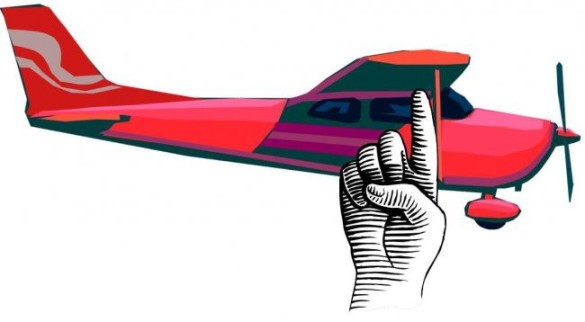
Assuming the information the manufacturer or designer gave you is correct - you get this right and the plane will fly reasonably well. But there's a little bit more to it than that.
That 'wing' CG is not the plane's true Centre of Gravity - usually*.
* [It can be, or very close to it, on flying wings, and mid-wing aircraft like 3D planes. Plus the term - 'wing' CG - is something I completely just made up to help me explain this. Make sure you read this bit really fast, like an advertising disclaimer.]
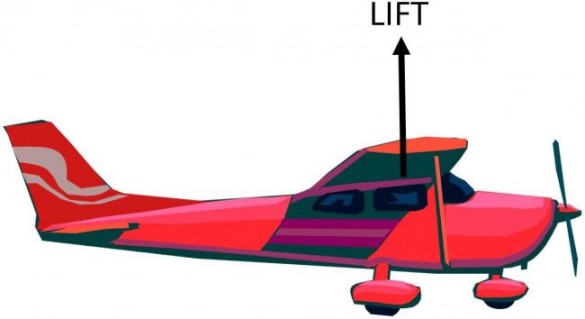
The 'wing' CG is just a little in front of a point where an imaginary vertical line representing ALL the LIFTING forces created by the plane cuts through the wing.
LIFT is produced when the plane is moving, but to make things easier for us the 'wing' CG is calculated so that it can be used when the plane is sitting still.
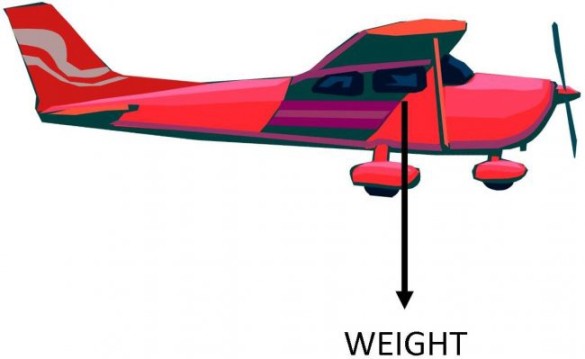
Acting in the opposite direction (due to gravity) is the combined weight of all the plane's parts. Again, to make this easier, this is gathered together into a single force acting through a line which (from bitter experience) always points straight down.
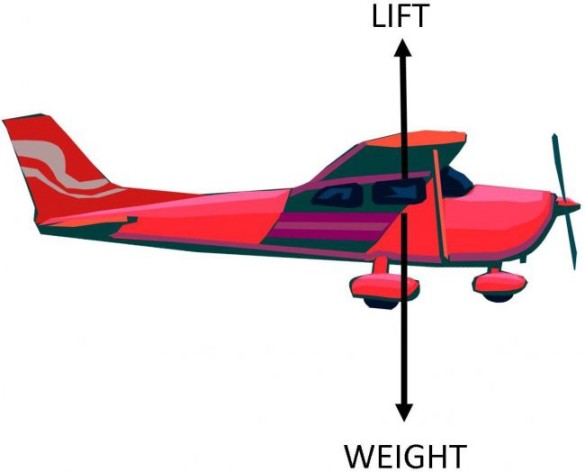
The trick of balancing a plane is to get the two opposing forces 'LIFT' & 'WEIGHT' to act near-enough through the same vertical line. Though for reasons of stability it is normal to create a slight 'nose heavy' condition that is constantly balanced by a small 'down' force created by the tail surface. If LIFT and WEIGHT are in too perfect a balance, the plane will be inherently unstable.

Looking at the extremes; if the forces don't act through the same line, it's a bit like pedalling a pushbike – the forces try to rotate the plane about the centre of the 'pedal crank' (a point between the lines the two forces are acting along.)
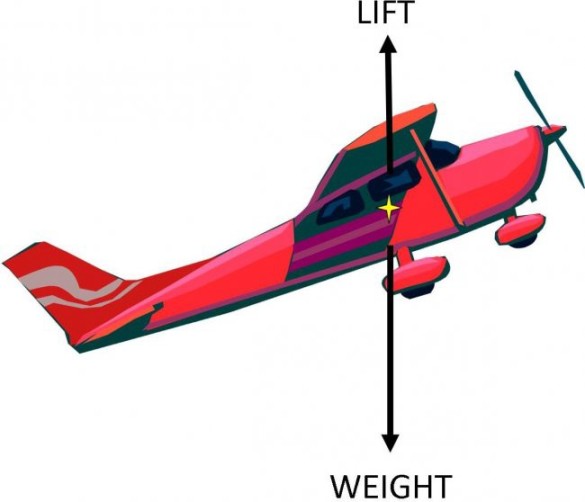
Of course, once the plane has rotated to a position where the two forces line-up with each other - the rotation stops. This 'stable position' could be when the plane is pointing upwards…
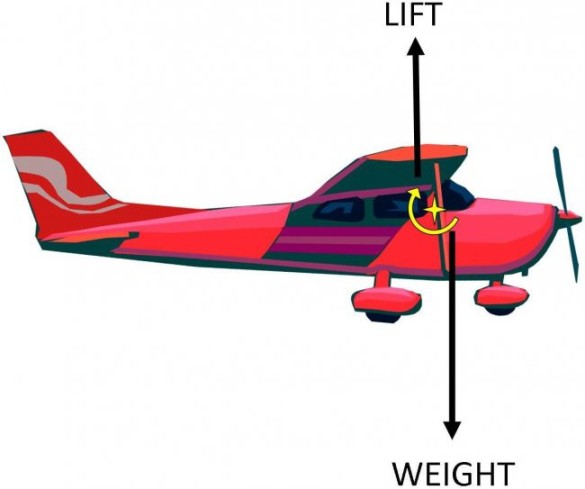
…or downwards.

Flying downward tends to keep the plane moving – which is GOOD (within limits) as it keeps air moving across the wings (providing lift) and across the elevator (allowing control.) As mentioned earlier a little tendency towards nose-down attitude is desirable to create stability - but too much can 'overwhelm' the elevator making the plane unresponsive and difficult to fly.
A nose-up attitude tends to slow the plane down - which is BAD, as the plane loses both lift and control. There's loads of other BAD stuff happens, but I'm keeping it simple here.
Within limits, this is why experts advise flying a little 'extra' nose-heavy until you get the feel for a plane (it also covers the possibility that the 'wing' CG the manufacturer gave you isn't quite right).

It's usually easier to achieve balance by changing the WEIGHT distribution, as the position of the LIFT component is hard to shift once a plane is built. In other words you're more likely to move the battery (or any other ballast) than shifting the wing.
Hang on! Hang on! If the CG marked on my wing allows me to balance the plane for flight, surely that's all I need. What's this 'other' CG and why should I bother with it?
This 'other' CG is the true Centre of Gravity of the whole plane; the point where EVERYTHING balances. If you could tie a string to that point (usually impossible), and hang the plane on the string, it would sit at any angle you left it - regardless of orientation - it would just sit there, motionless, hanging on the string.
OK, that's… interesting, but when would I need to know this true CG?
Well, generally speaking, you want the thrust of the motor to act through the true CG, so that when you apply more power it doesn't cause the plane to rotate and pitch up or down. Changing the line of thrust can be achieved by angling the motor.

You've probably seen an example of this – the distinctive angling of a motor on a pusher plane that has the motor above the wing. Yes, they did it for a reason – it wasn't just to stop the prop hitting the fuselage.
OK there are other factors like drag to consider, but knowing where the true CG is gives a good starting point for tuning a plane for efficient flight.
So if it's worth knowing - how do I go about finding my plane's TRUE CG?
Well, it's actually quite easy - you let gravity do all the work. First load up your plane for flight and get it balanced on that 'wing' CG.

Now pick a convenient point to hold your plane from and lift it by that point. Gravity will cunningly take charge and place the true CG directly below your fingers.
You can use a bit of string with a weight on it to help you see this better. (A laser level showing the vertical will also work.) Line the string up with where you're holding the plane and mark where the string (or laser line) crosses the fuselage. The true CG lies somewhere on this line.

Hold the plane at another point and repeat the process. Where the two lines cross is where the true CG of the plane is (if you peeled away half the fuselage).
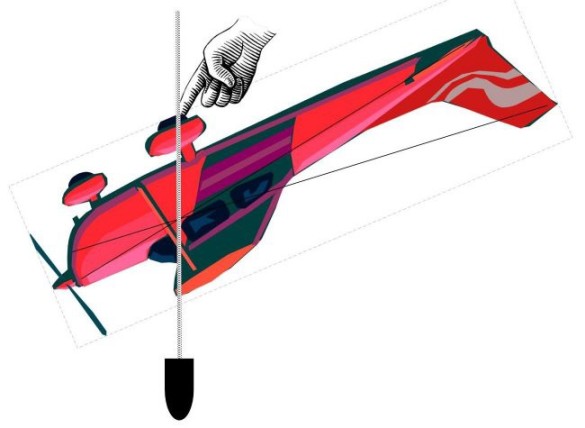
You can add more lines, and it could get a little more accurate – but if you do it right each time, you'll find that the lines just keep crossing at the same point.
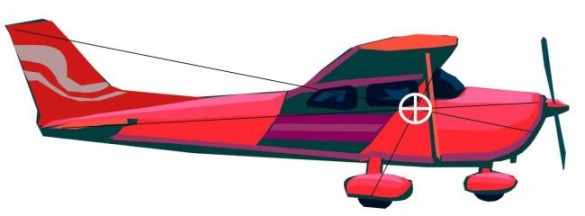
That point gives you a good indication of where the Centre of Gravity of the plane is…
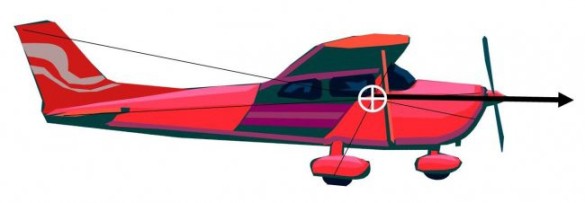
…which, among other things, can help when deciding on the best thrust angle for your motor.
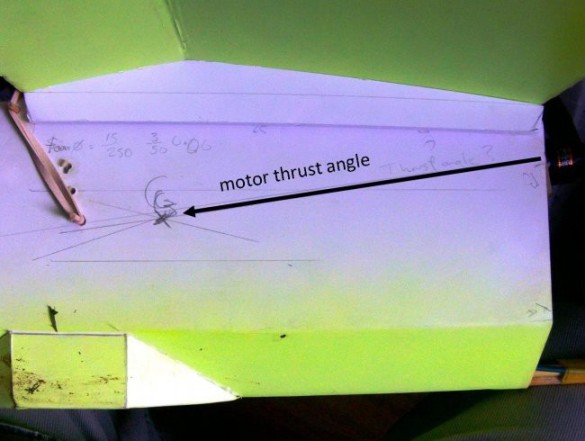
Here's a real-life example. I used this exact technique to find my true CG for my Smash Drone, and then adjusted the angle of the swappable pod to direct the thrust through the CG. The plane flew a lot better after the adjustment.
In fact this 'hanging' technique is tremendously versatile and can be used to find the centre of gravity of ANY regular or irregular object.